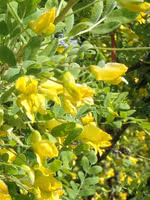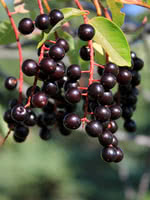Mon-Fri 9am - 5pm Mountain time
Common Caragana vs Western Chokecherry
Caragana arborescens
Prunus virginiana var. demissa
Common Caragana is a fast growing shrub that's known for its exceptional hardiness and drought tolerance. Although it's most commonly planted in shelterbelts, Common Caragana is also an excellent hedge or feature shrub.
Note: in warmer areas, this species can be difficult to contain once planted. Use the right plant in the right place.
Western Chokecherry is a shrub or small tree commonly used for farmstead and field windbreaks.
It produces white flowers in the spring and edible dark purple fruit that matures between September and October. Its cherries are great for making for making jams, jellies or wine, but are not very palatable for raw eating.
Common Caragana Quick Facts
Western Chokecherry Quick Facts
Toxicity: toxic to horses, cattle, etc.)
In row spacing: 0.3 m (1.0 ft)

